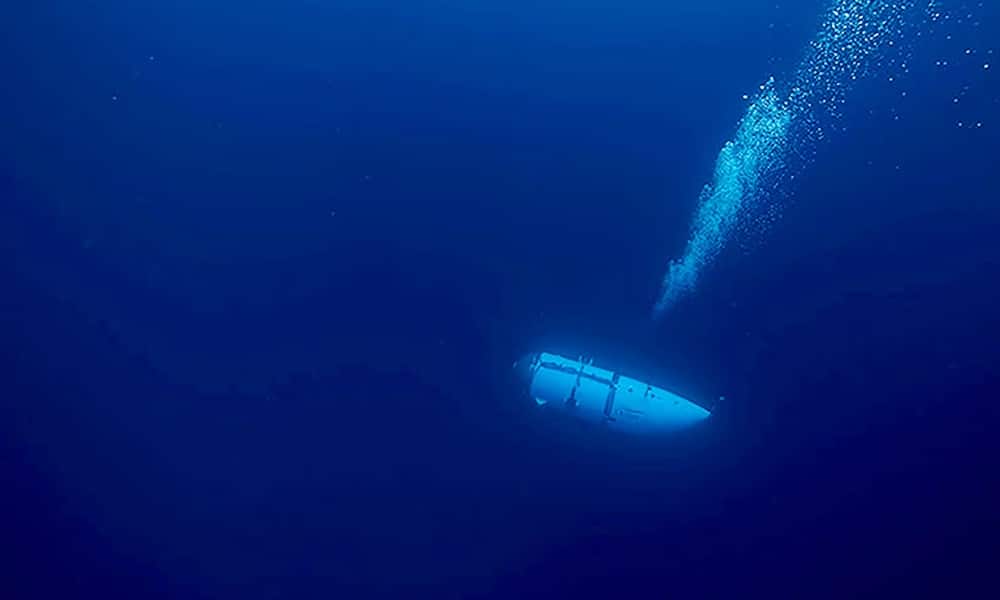Estimated reading time: 8 minutes
Updated on June 28, 2023 at 3:39 p.m. PST
Originally published on June 22 4:55 p.m. PST
Table of contents
- Presumed Bodies of the Titan Crew Found
- The Tragedy of the Titan Submersible
- Ocean’s Extreme Environment: A Grave Like No Other
- The Titan Implosion: Immediate Aftermath
- Deep-sea Decomposition: A Slow Process
- Role of Scavengers: Nature’s Undertakers
- The Final Stage: Bones and Sediment
- Remembering the Titan Crew
- FAQ: What Happens to the Bodies of the Titan Crew?
- More Titan Stories
Presumed Bodies of the Titan Crew Found
The military branch, US Coast Guard, announced on Wednesday that they have retrieved what are believed to be human remains from the ocean floor, located within the debris field of the Titan submersible. A comprehensive analysis will be conducted on these recovered materials.

The Tragedy of the Titan Submersible
In light of the recent tragedy that unfolded in the depths of the North Atlantic, where the submersible Titan imploded during a mission to the Titanic wreckage site, questions have arisen about the fate of the bodies of the five men who were tragically lost.
Ocean’s Extreme Environment: A Grave Like No Other
The bodies of the Titan crew, submerged at the chilling depth of 12,500 feet underwater, are subjected to an incredibly unforgiving environment. Recognizing the unique conditions of this final resting place – extreme cold, intense pressure, and complete darkness – provides context to their fate.
The Titan Implosion: Immediate Aftermath
In the case of the Titan disaster, after the implosion of the submersible, the bodies of the crew were likely subjected to instantaneous trauma due to the sudden and dramatic pressure change. The subsequent steps in their journey involve settling into the deep-sea environment.
Deep-sea Decomposition: A Slow Process
Over time, the bodies will decompose in a process distinctly different from terrestrial decomposition. Factors like the low temperatures, high pressure, and absence of sunlight play pivotal roles in this deep-sea decomposition process.
Role of Scavengers: Nature’s Undertakers
Ocean scavengers are likely to contribute significantly to this process. The action of creatures like hagfish, amphipods, and rat-tail fish, combined with the slow decomposition, will eventually leave behind skeletal remains.
The Final Stage: Bones and Sediment
In the final stages, the bones will likely get buried in the seafloor sediment, marking the end of a solemn process that underscores the immense power of the ocean and the fragility of human life in such extreme conditions.
Remembering the Titan Crew
The fate of their bodies is a stark reminder of the finality of this loss. However, it is essential to remember the indomitable spirit of exploration these men embodied and the valuable contributions they made to deep-sea exploration.
FAQ: What Happens to the Bodies of the Titan Crew?
Yes, the U.S. Coast Guard has reported that they have recovered what are being referred to as “presumed human remains” from the seafloor in the area where the debris of the Titan submersible was found.
The U.S. Coast Guard has announced that a formal analysis will be conducted on the presumed human remains that were discovered in the area of the Titan submersible’s debris field.
The U.S. Coast Guard will be responsible for conducting the formal analysis of the presumed human remains that were recovered from the Titan submersible’s debris field.
The Titan submersible, a 22-foot vessel with five passengers, experienced a catastrophic implosion during a deep-sea exploration mission to the Titanic wreckage site, at a depth of approximately 12,500 feet.
The timeline for the results of the formal analysis of the presumed human remains found in the Titan submersible’s debris field has not been disclosed by the U.S. Coast Guard at this time.
The discovery of presumed human remains in the Titan’s debris field is a significant development in the investigation into the tragic accident. This could potentially provide more information on what exactly occurred during the implosion of the Titan submersible.
An underwater implosion typically occurs when the hull of a submarine or submersible cannot withstand the immense pressure exerted by the surrounding water. This usually results from a weakness or failure in the hull structure or its pressure-resisting components.
The sudden change in pressure during an implosion would cause immediate trauma to the human body, essentially disintegrating it. The specifics, however, depend on various factors including the depth at which the implosion occurs and the design of the submersible.
Decomposition at the ocean’s bottom is a slow process due to extreme cold, intense pressure, and complete absence of sunlight. The bodies would first be acted upon by scavengers. Over time, the slow decomposition process combined with the action of the scavengers would eventually leave behind skeletal remains.
The skeletal remains would likely become part of the seafloor over time, being buried under sediment, thereby becoming a part of the ocean’s ecosystem.
Recovery of bodies from such extreme depths is incredibly challenging due to the unforgiving deep-sea environment. It requires specialized equipment and poses significant risks, hence it is rarely attempted. Following a submarine implosion, the extreme and rapid increase in pressure is immense. This instantaneous transition from a controlled environment to one of severe pressure is highly destructive. It’s unlikely that anything, including human bodies, would stay intact in such an event. It’s important to note that this is a worst-case scenario, and every effort is made in the design, construction, and operation of submarines to prevent such occurrences.
Preventing such incidents involves rigorous safety measures, including meticulous pre-dive checks, continuous monitoring of structural integrity, and adhering to operational limits, especially depth limits. Training for emergency scenarios and maintaining effective communication lines are also crucial.
In both cases, the extreme pressure, low temperature, and limited light of the deep ocean would lead to similar processes of decomposition. The specific conditions would depend on factors like the exact depth and local marine life.
Given the amount of time that has passed and the deep-sea conditions, it is highly unlikely that any recognizable human remains of the Titanic disaster can be found today.
Bodies that were not recovered would have likely undergone decomposition under the extreme conditions of the deep sea, similar to those experienced by the crew of the Titan submarine.
The exact fate of all the bodies from the Titanic disaster is unknown. In the days following the tragedy in 1912, some bodies were recovered by passing ships, but many were not. Due to the extreme depth and cold temperatures where the Titanic sank, any bodies not recovered soon after the sinking would have been subject to the forces of decomposition and scavenging marine life. Today, researchers believe that there are likely no recognizable human remains at the Titanic wreck site. Instead, remnants of clothing, shoes, and other personal belongings, which were more resistant to decomposition, may still exist. The Titanic’s debris field is expansive, spanning an estimated 15 square miles, meaning not all wreckage or associated remains have been found or thoroughly explored. As of September 2021, no identifiable human remains have been confirmed at the Titanic wreck site.
The potential for recovering the bodies of the Titan submarine crew from the ocean’s depths is complex and dependent on a multitude of factors. The wreckage is situated about 13,000 feet below sea level, where extraordinary pressure and cold temperatures can pose significant challenges for recovery missions. Typically, specialized tools such as remote-operated vehicles (ROVs) are used to explore the debris and its surrounding area in such scenarios. However, physically retrieving bodies from such profound depths is a considerable challenge. The length of time that bodies have been submerged could impact their state of preservation, thereby influencing the likelihood of successful recovery. While these challenges remain, the US Coast Guard announced on Wednesday that they have recovered “presumed human remains” from the seafloor in the vicinity of the Titan submersible’s debris field. A formal analysis is currently being conducted by the military branch to confirm these findings. Thus, while the situation is ongoing and complex, efforts are being made to recover and identify the remains of the Titan’s crew.
More Titan Stories







